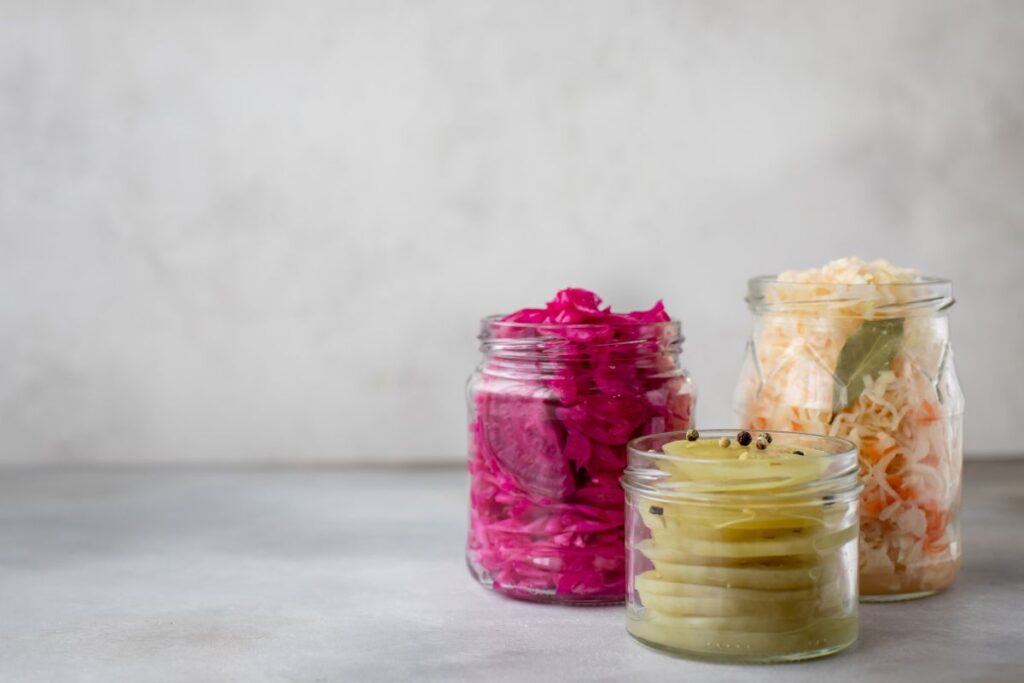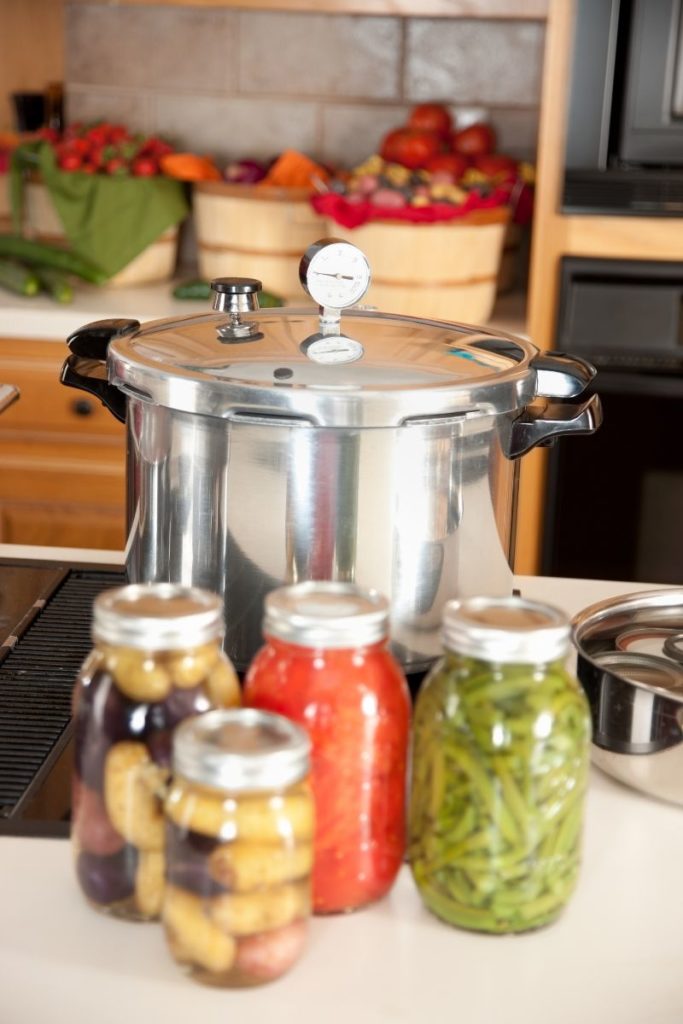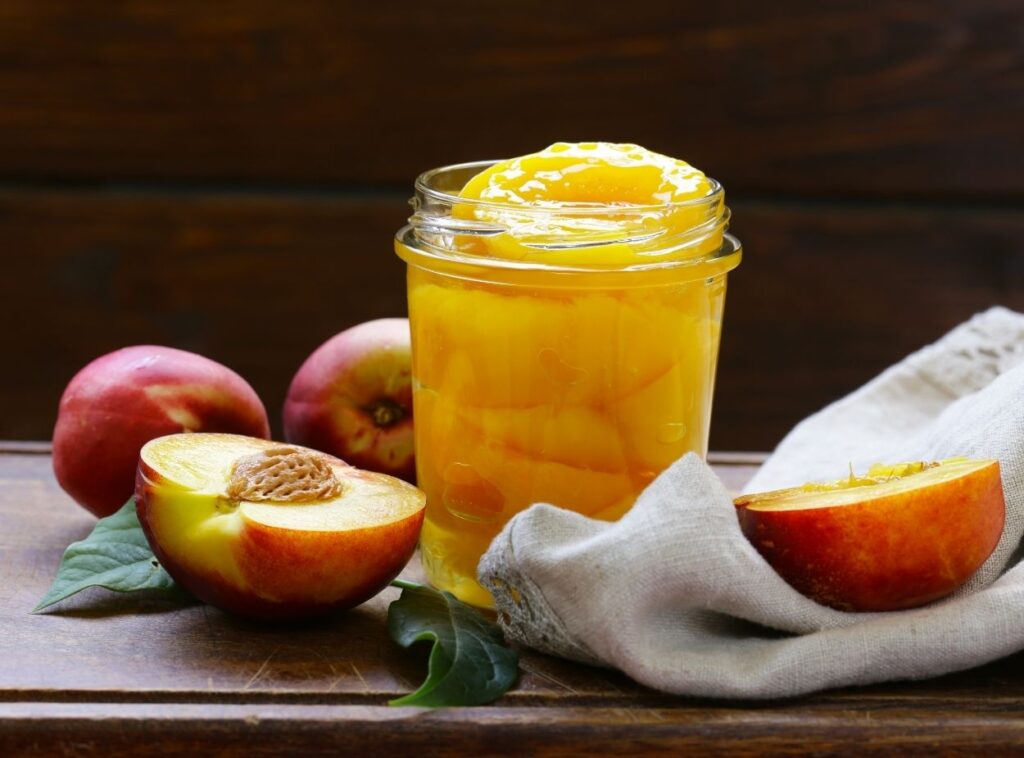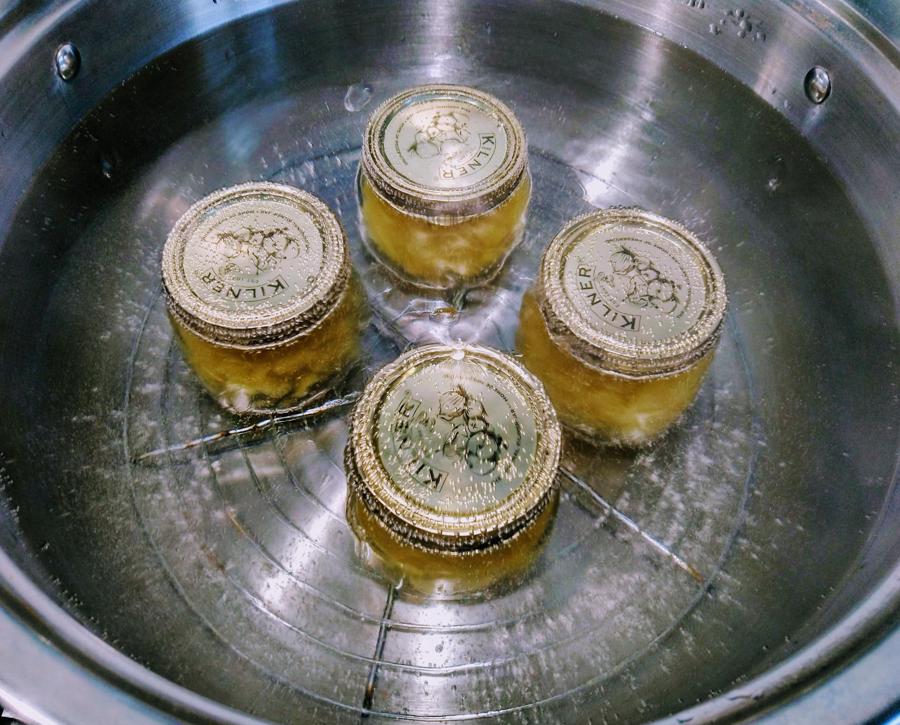If you peruse canning recipes like I do you may notice some are called raw/cold pack and others hot pack. What are the differences between hot pack and cold pack canning and why are there two methods?
Table of Contents
Hot Pack vs. Cold Pack Canning
The difference between hot pack and cold / raw pack is to do with the temperature of the food as they get packed into the jars before canning.
Regardless of whether the jars are packed with hot or cold food, both are heated in a water bath or pressure canner in order to seal the jars.
Hot packing is for preserves such as jam, jelly chutney, or relish that is cooked and gets poured into jars while hot before canning in a water bath.
A cold pack or raw pack is typically for whole pickled vegetables or fruits that are arranged in jars while they are raw. They are then canned and sealed in a hot water bath.
Similarities Between Hot & Cold Pack Methods
Typically both methods of packing jars will have you filling hot jars that have just been sterilised. Even though you may be putting cold vegetables into jars the jars themselves may well be hot.
As the jars are going to be lowered into a hot water bath they need to be heated to avoid a temperature shock that may break the glass.
Why Is There A Difference In The Way Jars Are Filled?
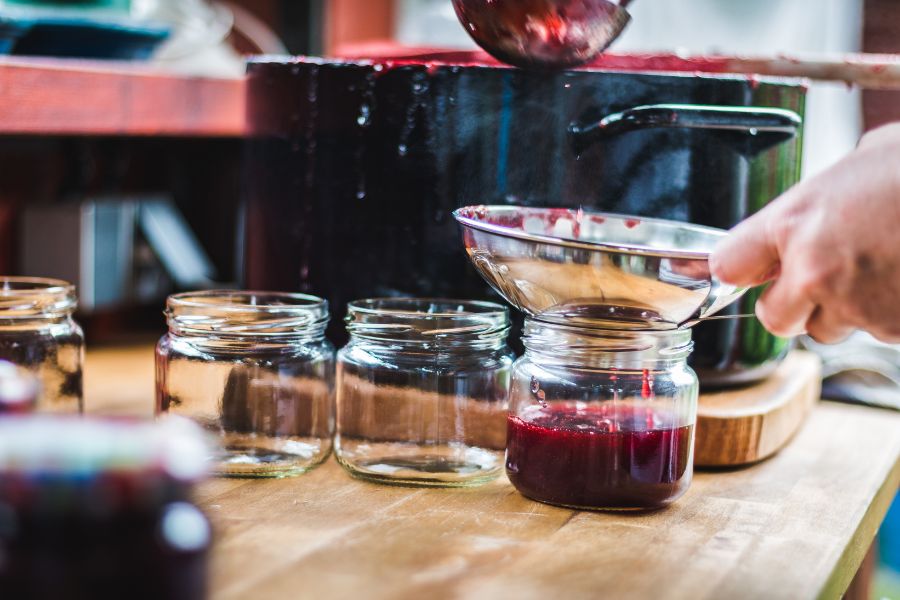
While any canning recipe may not overtly state it is a hot pack or cold pack recipe the instructions will dictate which method is used.
The reason for cold packing might be to do with ingredients being canned. As a hot water bath heats the contents of the jar after it is cold pack this in affect cooks the vegetable or fruit being canned. If it is already cooked before canning it may end up being too soft, mushy or even just fall apart after canning.
Hot packing jars as mentioned above are typically for preserves such as jam, jelly or relish that need cooking before canning. Their structure isn’t going to break down after being heated in a water bath.
Why Following Your Recipe Is Important
Regardless of whether your recipe calls for adding hot food to your jars or cold, you need to take note of the processing time in your recipe.
The processing time is the amount of time the jars are heated in the hot water bath. The processing time is set to ensure the contents of the jar right to the centre are heated up.
If jars are hot packed then this processing time is usually lower as the contents are already hot.
Cold packed jars need longer processing in the water bath until the contents right in the centre of the jar are heated. If the jars are not processed long enough your jars may not seal or you may not heat the contents enough to prevent spoilage.
What About Refrigerator Pickles?
Even though you may not be canning in a water bath or pressure canner both methods; hot pack or raw pack are used when making quick pickles or refrigerator pickles.
This pickled radish for example is raw packed to retain the freshness and crunch of the radishes because processing in a hot water bath would mean you lose those qualities.
A refrigerator jam on the other hand is hot packed into jars with the intention of eating straight away. The jam is added to the jar boiling hot and then the jar is left to cool before being refrigerated and used.
